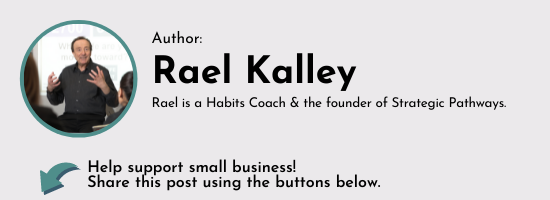Why Optimism Alone Won’t Do It To Get Results
I had an interesting conversation with a client a week ago. He approached me full of optimism about his business.
He was eagerly explaining to me that he had set ambitious goals for his company for this year. His plan is to increase his total sales by 40% and he excitedly took me through graphs and spreadsheets while explaining his vision for his organization.
My client is in the retail business which means he relies on customers coming to his locations to make purchases. His sales have been flat for the past three years,
When he was finished I asked a question that caused our conversation to take an interesting turn,
“What are you doing differently this year from what you have been doing over the past several years?”
His response, “What do you mean,” surprised me.
Optimism Alone
It turns out that he has no strategy or action plan for how his sales will increase, which suggested to me that he was basing his forecasts on optimism alone.
As I listened to him explain that he just “had a good feeling” about 2018, I could not help but think of an expression that I learned many years ago, “If you always do what you’ve always done, you’ll always get what you’ve always got.”
So many of us have been guilty of the same thinking and baseless optimism that seemed to have possessed my client.
We eagerly anticipate bigger and better while continuing to do what we have always done.
And while optimism in the face of adversity is an admirable trait, the truth is that if we wish things to be different, we need to do different things.
Today is the final day of the first month of the year. If we have spent January doing the same things we did all last year, we should not really be expecting 2018 to be any different from 2017.
I’m not suggesting that to attain a 40% increase in sales requires 40% more effort and 40% more time spent, but what I am saying unequivocally is that different strategies and different behaviours are imperative if a goal of that magnitude is to have any chance of success.
3 Simple Steps
In fact, the formula for success in any endeavour is the same. It has three simple steps:
1. Determine all the steps necessary to produce success, e.g. everything required to successfully complete a sale.
2. Repeat.
3. And again.
A habit is defined as something we repeatedly do and success is simply doing that which produces the results you want.
And then keep doing it.
Of course, all processes require tweaking for improvement, but the principal never changes.
Continuing to use the very processes that do not produce the results we want, validates a quote often attributed to Einstein, “The definition of insanity is doing the same thing over and over again and expecting the result to be different.”
It won’t be.
Process vs. Results
There is an invaluable habit to be acquired from all this. It is The Habit of Examining Process Versus Results. This habit causes us to microscopically examine what we are doing to produce the results we are getting and being willing to recognize the need for change when the results are less than desired.
Every area of our lives stands to benefit immensely by the adoption of this habit. Our willingness to be flexible in what we do and how we do it, will, more than anything else, lead us to the processes necessary to achieve the results we want.
And then all we need is the willingness to do those necessary things.
And then, repeat.
A simple formula with stellar results.
Let’s make a habit of meeting like this.


